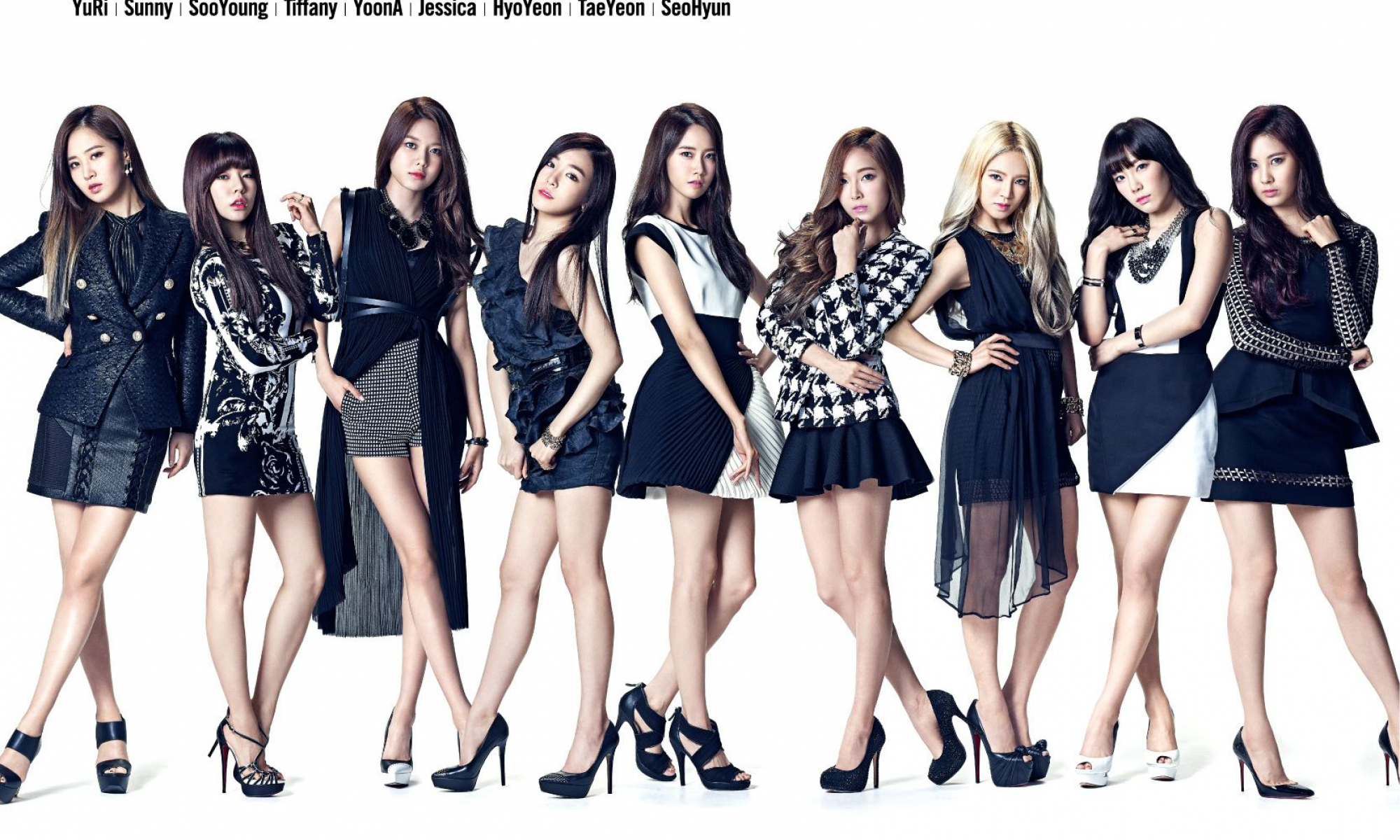Video Analysis
“I Got A Boy” MV creates scenarios of girls’ talking about their feelings and moods after evolved in romantic relationships. Unlike traditional female idols’ MV which incorporating feminineness, this one introduces assertive and independent views in multiple ways. I argue this MV influences people’s sexual attitudes including gender egalitarian towards a positive way, especially women’s.
The most outstanding attribution is the lyrics. The song is composited of mixed Korean and English. In Korean parts, one phrase is “I am angry because my man does not see me as a girl” in direct translation. Relating to the scenes, idols dress in street styles which subverting the sweet image, thus “her man” has the concept of “not girl”. Lin Xi and Robert Rudolf explains clothing-style prejudices, “sexual suggestiveness often balanced with an innocent, fragile, and childlike Lolita concept that was designed mainly to satisfy ajeossi (middle-aged men’s) fantasies” (2017: 31). Criticizing females due to violation of appearance stereotype is definitely discriminational behaviour, and this is something women should be angry about. Putting forward this idea by lyrics advocates women that they have rights to dress as they like, and makes them more assertive about themselves. In English parts, my argument is supported by “I got a boy”, which is the constant refrain and also the title of the song. It states relationship from women’s self-perspective, blowing against the objectification of women. Moreover, comparing to Korean expression “oppa” while calling a slightly oder male who female interested in, the English lyrics addresses independence. Although “oppa” means “elder brother of a female” literally, Korea has “age-based hierarchy, the term by definition subordinates the females” (Kim and Choe 2014: 319). To persuade gender equality, these kinds of words should be decreased to a minimized level. Also, case study examined in Phil Benson’s article indicated “asian language work projected softer, more feminine and less sexually assertive identities” (2013: 28). Thus, replacing these Korean words by less sexism-ambiguous English words, has subtle influence on audiences’ attitudes towards gender egalitarian.
Secondly, the combination of appearances and performances is another reinforcement for my argument. I want to propose one more point in addition to idols’ appearances. There are multiple scenes’ stylings using full-legged tattoos which creates rebelling images. With Hyoyeon’s aggressive behaviours appeared in 4:41 in the MV united together, idols boldly challenged the traditional gender roles which “women wherefore likely to be presented as weak, dependent, submissive, and nurturing” (Lin and Rudolf: 30). It is important to blur the boundaries between sexual categorization in order to overcome the stereotypes.
Thirdly, the practice of interspersing plots among dances supports my argument. There are few plots that idols’ body gestures and performances have distinguishable differences from other scenarios. In these plots, the main background is pink, and idols’ body gestures show a tendency towards “Aegyo” which is “tantrum-like movements” and “appropriation of pet animal behaviours” (Puzar and Hong 2018: 1). It is just the opposite way of other scenes! Combining with the lyrics, this contradictory started to make sense. These plots portray girls in the relationships while they suppress their true identities and interests. Once lyrics point out the conflict “Here comes trouble”, idols suddenly style totally differently, their face expressions appear to be indeed and joyful, their body gestures become confident and nature. The practice is inspiring women to express their true identities. Suppression in order to cater to gender roles would not earn true happiness. It is an enhancement of developing assertive sexual attitudes for women.
In conclusion, with multiple approaches, SNSD successfully created this MV for the battle against gender inequality. My argument is supported by several perspectives including filming practices, idols’ appearances and mainly lyrics. Since gender inequality is still widespread in Asian countries, it is necessary to increase engagement of ideals which persuading gender equality in future Kpop industries because music has became a mass communication and has great influence on sexual attitudes.
Wenhui Fu
Bibliography:
Lin, Xi and Robert Rudolf. “Does K-pop Reinforce Gender Inequalities? Empirical Evidence from a New Data Set.” Asian Women 33, no. 4 (2017): 27-54.
Stephen, Epstein and James Turnbull. “Girls’ Generation? Gender, (Dis)Empowerment, and K-pop.” in The Korean Popular Culture Readers, edited by Youngmin Choe and Kyung Hyun Kim. 314-36. Durham: Duke University Press, 2014.
Phil, Benson. “English and identity in East Asian popular music.” Popular Music 32, no. 1 (2013): 22-33.
Hong, Yewon and Aljosa Puzar. “Korean Cuties: Understanding Performed Winsomeness (Aegyo) in South Korea.” The Asia Pacific Journal of Anthropology 18, no. 1 (2018): 1-17.

